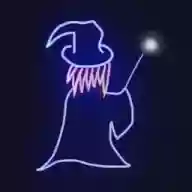Niigata’s folk songs, children’s songs, and nursery rhymes: the heart of our hometown passed down in song
Niigata Prefecture is known for hosting traditional Bon dances and festivals, as well as for its large area of rice cultivation and high yields.
We’ve selected many folk songs and children’s songs related to Niigata, including pieces themed around Sado Island.
Folk songs, which are often performed at festivals, convey a lively, festive atmosphere through their rhythmic sounds.
It’s also recommended to explore the background behind songs like “Sado Okesa,” which are beloved across Japan.
Be sure to listen to the folk and children’s songs that showcase the charm of each region of Niigata.
- A classic song that celebrates Niigata. The enduring spirit of our hometown passed down through song.
- Ranking of Popular Folk Songs
- Folk Songs, Children's Songs, and Nursery Rhymes of Aomori: Japanese Songs from Tsugaru and Hachinohe that Resonate with the Heart
- Folk songs, children's songs, and nursery rhymes of Nagasaki: the heart of the hometown passed down through song
- Folk songs, children's songs, and nursery rhymes of Toyama: the enduring heart of our hometown passed down through song
- [Japanese Folk and Regional Songs] A Collection of Beloved Masterpieces from Across Japan, Brimming with Local Pride
- [Folk Songs of Yamagata] The Heart of Our Hometown Passed Down in Song: Feelings Woven into Nostalgic Melodies
- Collection of winter nursery rhymes, folk songs, and children's songs. Includes fun winter hand-play songs too.
- [Folk Songs and Children's Songs of Akita] A curated selection of local masterpieces that evoke love for one’s hometown
- Folksongs, children's songs, and nursery rhymes of Fukushima: the heart of our hometown passed down in song
- [Folk and Children's Songs of Hokkaido] Songs of Hokkaido that continue to be loved across generations
- Beautiful Folk Songs Passed Down in Miyagi Prefecture: A Collection of Masterpieces that Play the Heart of the Hometown
- Folk songs, children's songs, and nursery rhymes of Iwate: the heart of the hometown passed down through song
Niigata’s folk songs, children’s songs, and nursery rhymes: The enduring heart of our hometown (31–40)
Plover on the BeachFORESTA

Hamachidori, published in 1919 (Taisho 8), is a school song with lyrics by Naruaki Kashima and music by Ryutaro Hirota.
When Mr.
Kashima visited his friend Taichi Kuwayama in Kashiwazaki, the two took a walk from Urahama to the Banjin Coast.
What Mr.
Kashima jotted down at that time became the song’s lyrics.
Kamo MatsuzakaGinji Nakazawa

“Kamo Matsuzaka” is a Bon dance song handed down in the city of Kamo, located in the central part of Niigata Prefecture.
Kamo’s Bon dance is performed in a procession style that flows along the main street.
From around 1598 (Keicho 3), new farmland development progressed in the Kamo area and the number of immigrants from the Noto and Kaga regions increased; it is said that these people brought with them the marching-style Bon dance.
trainAira Ōwada

Kisha (The Train) is a children’s song composed by Aira Owada, a native of Murakami who was born into a former Murakami-domain samurai family.
The song delights in a train passing through various places and the rapidly changing scenes it encounters.
Owada studied at the Tokyo Music School (now Tokyo University of the Arts) and was also dedicated to music education.
In conclusion
We have introduced folk songs and children’s songs inspired by regions across Niigata, including Sado and Echigo.
Listening to these traditionally beloved tunes can be a great way to spark interest in folk music and enka.
It’s also recommended to enjoy them alongside Bon dances and festivals held in Niigata Prefecture.
From songs that sing of hometown pride to pieces with hauntingly poignant melodies, take the time to learn Niigata’s folk and children’s songs, packed with a wide range of charms.





